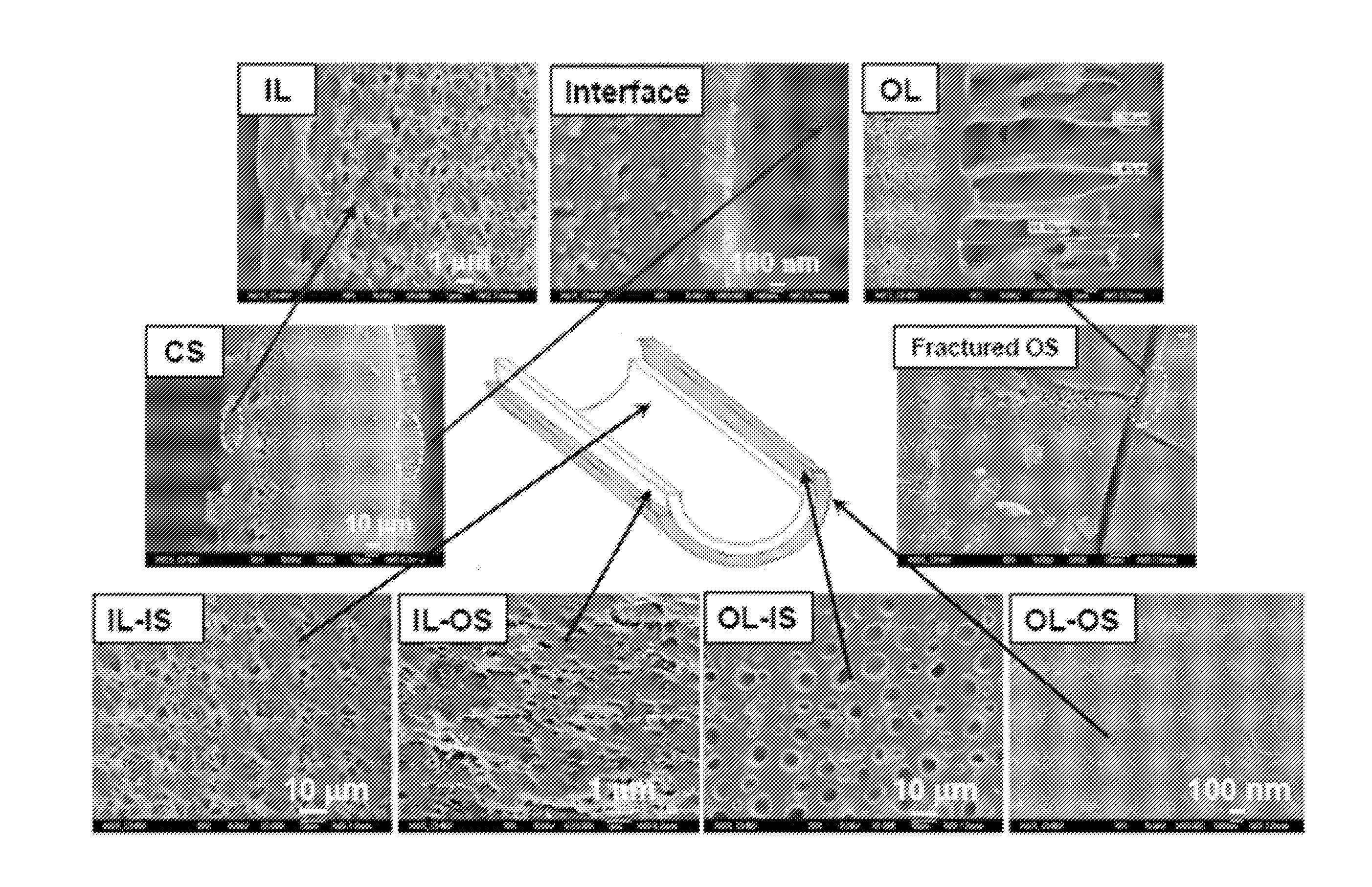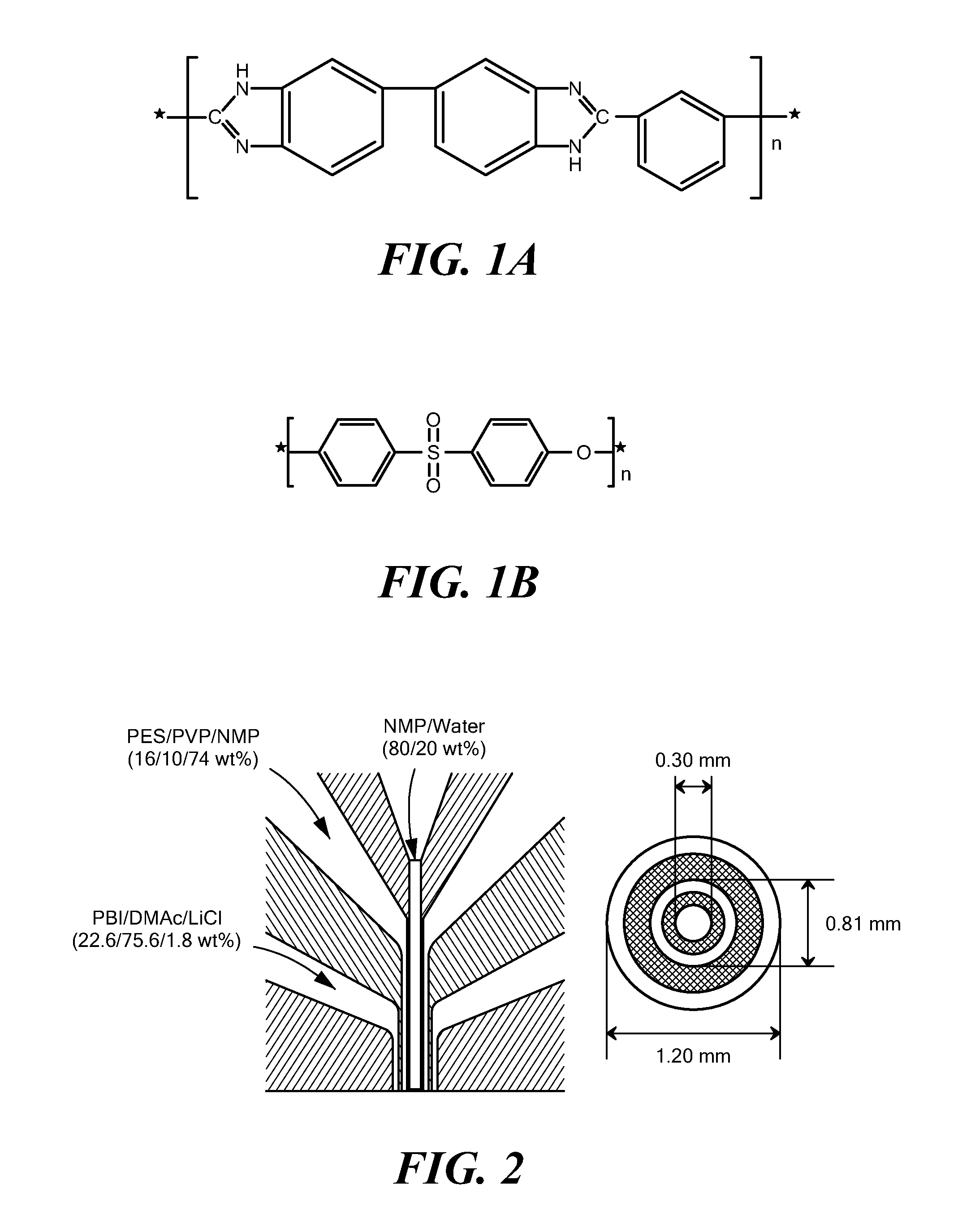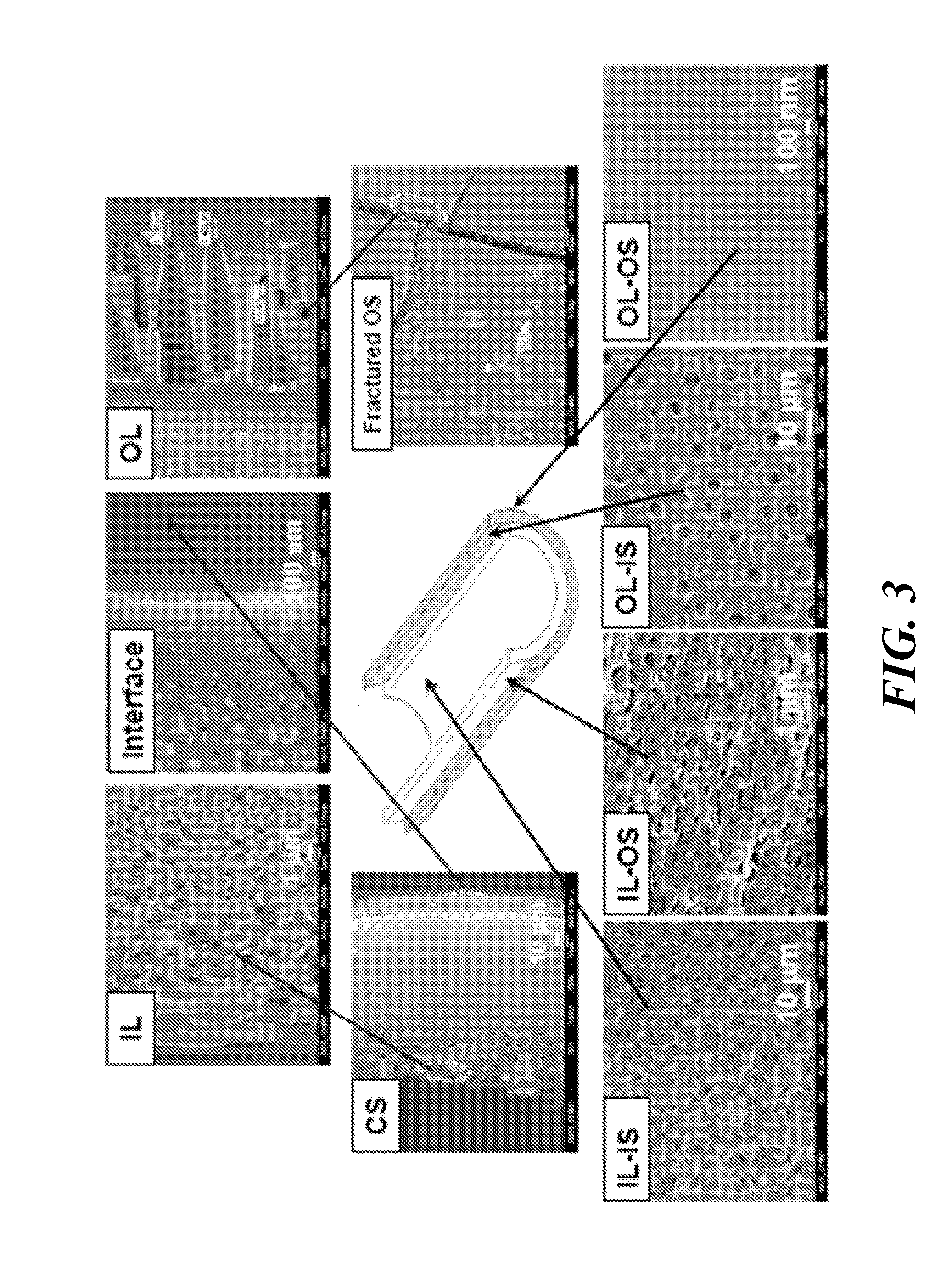Dual-layer hollow fibers with enhanced flux as forward osmosis membranes for water reuses and protein enrichment
a technology of polybenzimidazole and ethersulfone, which is applied in reverse osmosis, filtration separation, and separation processes, etc., can solve the problems of lack of desirable draw solutions and limited number of commercially available fo membranes with superior separation performance, and achieves the effect of increasing the concentration of protein in the solution and reducing the osmotic pressur
- Summary
- Abstract
- Description
- Claims
- Application Information
AI Technical Summary
Benefits of technology
Problems solved by technology
Method used
Image
Examples
example 1
Morphologies of the PBI-PES-PVP Dual-Layer Hollow Fiber Membrane
[0044]The as-made dual-layer membrane had outer and inner diameters of 522 and 290 μm, respectively (SEM images not shown here). FIG. 3 shows the cross-section (CS) morphology that consists of a PBI selective outer layer (OL) of around 20 μm, a fully porous sponge-like PES inner layer (IL), and a delamination-free interface. Underneath the PBI selective layer, there were plenty of macrovoids directly and openly connected to the interface as shown in the OL-IS section of FIG. 3, while the outer skin of the inner layer was porous as shown in the IL-OS section. As a result, there was no much resistance at the interface. Since the inner layer and inner layer surface were fully porous as shown in their corresponding IL and IL-IS photos, the PBI outer layer was the resistance and selective layer. However, as displayed in its OL photo, the average thickness of the selective layer was only about 2.04-2.23 μm if deducting the ma...
example 2
Solute Rejections on the PBI-PES-PVP Dual-Layer Hollow Fiber Membrane
[0046]FIGS. 4(A)-(C) show the solute separation, probability density, and cumulative pore size distribution curves. Table II below summarizes the solute rejection results on the dual-layer hollow fiber forward osmosis membrane.
TABLE IISolute rejection characterization results on PBI-PES dual-layermembranesPWP, LMHNaClMgCl2μP, nmσPMWCO, Da(@ 1 bar)rejection, %rejection, %0.271.744520.933.092.8
[0047]The average pore size (μp) of 0.27 nm in radius indicates the membrane achieved in Examples is sitting between the nanofiltration membrane and the reverse osmosis membrane. The pure water permeability (PWP) of this membrane was only 0.9 LMH at an operation pressure of one bar. The pore size distribution or the probability density curve shown in FIG. 4(B) indicates that the dual-layer hollow fiber membrane has a sharp pore size distribution. This is essential for rejecting ions and contaminants. Additional characterization...
example 3
Water Reclamation Via the PBI-PES-PVP Dual-Layer Hollow Fiber Membrane
[0048]The dependence of water and salt flux on MgCl2 concentration at two different operation modes, namely FO and PRO, is plotted in FIG. 5. It demonstrates that the water flux went up with an increased draw MgCl2 concentration while the salt fluxes were satisfactorily low in any circumstance. Generally the water flux was five orders of magnitude higher than the salt flux with the correspondingly same draw solution used in FO tests. It is expected that the water flux increase with increased draw solution concentration is mostly due to the increased osmotic pressure as the driving force in both operation modes. In addition, the water permeation flux in PRO mode was much higher than that in FO mode. This is because in the FO mode the net driving force reduced more significantly than in the PRO mode due to the severe dilutive internal concentration polarization occurred in the porous support layer (i.e. in the PES-P...
PUM
| Property | Measurement | Unit |
|---|---|---|
| thickness | aaaaa | aaaaa |
| thickness | aaaaa | aaaaa |
| thickness | aaaaa | aaaaa |
Abstract
Description
Claims
Application Information
 Login to View More
Login to View More - R&D
- Intellectual Property
- Life Sciences
- Materials
- Tech Scout
- Unparalleled Data Quality
- Higher Quality Content
- 60% Fewer Hallucinations
Browse by: Latest US Patents, China's latest patents, Technical Efficacy Thesaurus, Application Domain, Technology Topic, Popular Technical Reports.
© 2025 PatSnap. All rights reserved.Legal|Privacy policy|Modern Slavery Act Transparency Statement|Sitemap|About US| Contact US: help@patsnap.com



